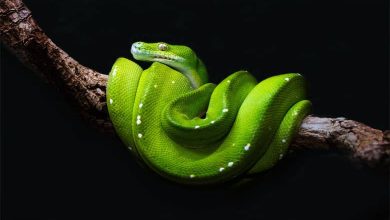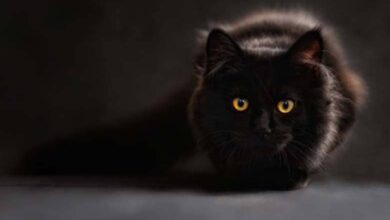What the world looks like in the eyes of the lizard?

Judging by human standards, they always seem to be “numb”But are they so dull and numb?
Can they see the world in front of them?
In the suborder of lizards, as the most differentiated group of amphibians and reptiles, the comprehensive vision of lizards can be said to be the first.
As more visually oriented creatures, not only do lizards have human-matched visual acuity, most diurnal lizards can see more colors than humans.
In some lizards, cone cells are calibrated so they can see ultraviolet light that is invisible to humans. This means that the color of the companions in the eyes of the gorgeous diurnal lizards is far more explosive than what humans see.
The most representative chameleons and anoles can not only observe the world and prey through rich colors but also communicate and make decisions through colors. Therefore, lizards are veritable “visual animals”
Another example is the nocturnal lizards represented by the gecko family, which have evolved night vision capabilities to the extreme: geckos still can see colors in low-light conditions, even in dark environments. Although it can distinguish colors slightly worse than frogs, its visual acuity can still crush it.
In addition to two sensitive eyes, lizards generally have a “third eye”. This hole-like scale is the third eye that most lizards have
Although the structure is simple, it can sense light and shadow to choose the right area and time to warm. Interestingly, research published in the journal Science in 2006 by Professor King-Wai Yau from the Departments of Neuroscience and Ophthalmology at the Johns Hopkins University School of Medicine showed that the top eye of some lizards can even See two different colors: green and blue. These colors may be used to determine the time of day.
But the lizard’s vision can only be achieved with the right light.
Be aware that lizards, especially diurnal lizards, are very dependent on UV intensity and light levels, and the brightness of ordinary indoor bulbs is far less than that in the wild.
The environment that is bright enough to your eyes may be slightly dim to their eyes; and because indoor light bulbs generally lack long-wave ultraviolet (UVA), so in the home indoor light because there is no UVA coloring, lizards can only see the world of “color blindness”. That’s why lizards love to go to the sun as long as there is sun, even through glass, because they can see clearly and colorfully there.
Therefore, a bright enough UVA can not only provide the necessary heat for the lizards but also help them restore the world they originally saw. After all, in a world where you can’t see clearly and are colorblind, vegetables are not the color of vegetables, and you can’t see the bugs that slip away. They will naturally be unable to eat and lose their appetite.
Remember! Lizards need UVA and brightness, but that doesn’t mean sticking light bulbs to their eyes!
No matter how many watts of lights you use, “you must keep a distance of more than 20cm from the lizard, and you must be equipped with a shield” so that they have room to choose. Therefore, it is recommended that any diurnal lizard use an environment with a height of more than 50cm (the bigger the body, the higher the height), to have enough fault tolerance and selection space
Otherwise, it is only a matter of time before long-term exposure to excessively bright environments will cause cataracts.
The following is an introduction to the feeding guidelines.
- The Size of the Reptile Tank
Free-range pet lizards are okay, but generally, they are kept in reptile tanks. To keep pet lizards in reptile tanks, you need to prepare a larger container for them first. At least one side is 2.5 times the length of the lizard’s body. It can be prepared according to the size of the pet lizard.
- Food
Lizards are carnivorous, feeding on insects, earthworms, snails, and even mice.
Small lizards can feed on crickets. In addition, they can also feed insects, earthworms, etc. Only feeding insects are prone to a lack of calcium and vitamin intake, so special nutritional additives should be added. Medium to large lizards can be fed normal meat, liver, cat food, etc., but it is best to add special nutrients.
- Environment
Lizards are ectothermic animals and are sensitive to temperature. It is very important to keep the surrounding temperature appropriate. Try to keep the temperature above 20 degrees. In winter, you can also adjust the temperature by using lamps or heat pads to prevent the lizards from hibernating in reptile tank.




